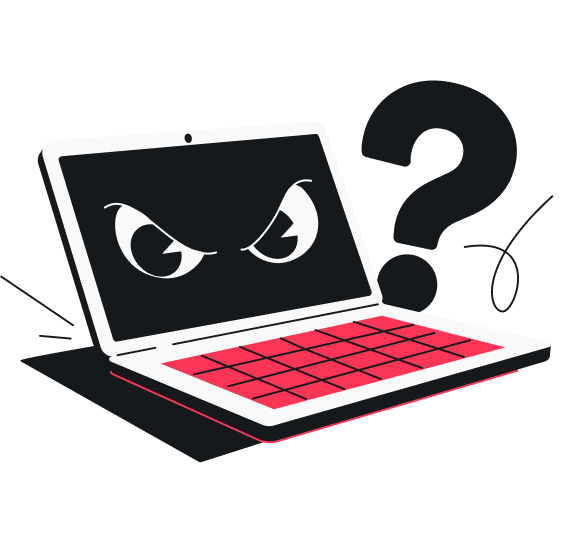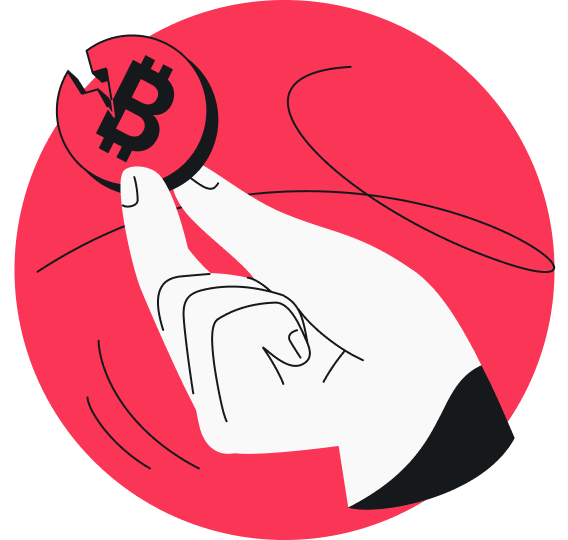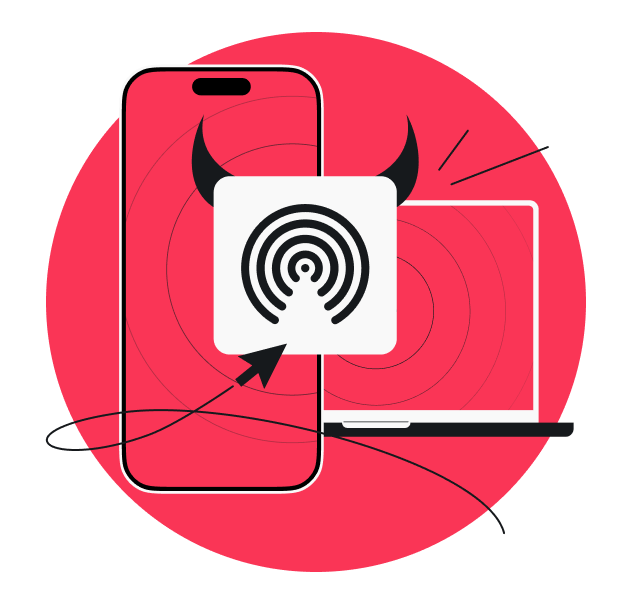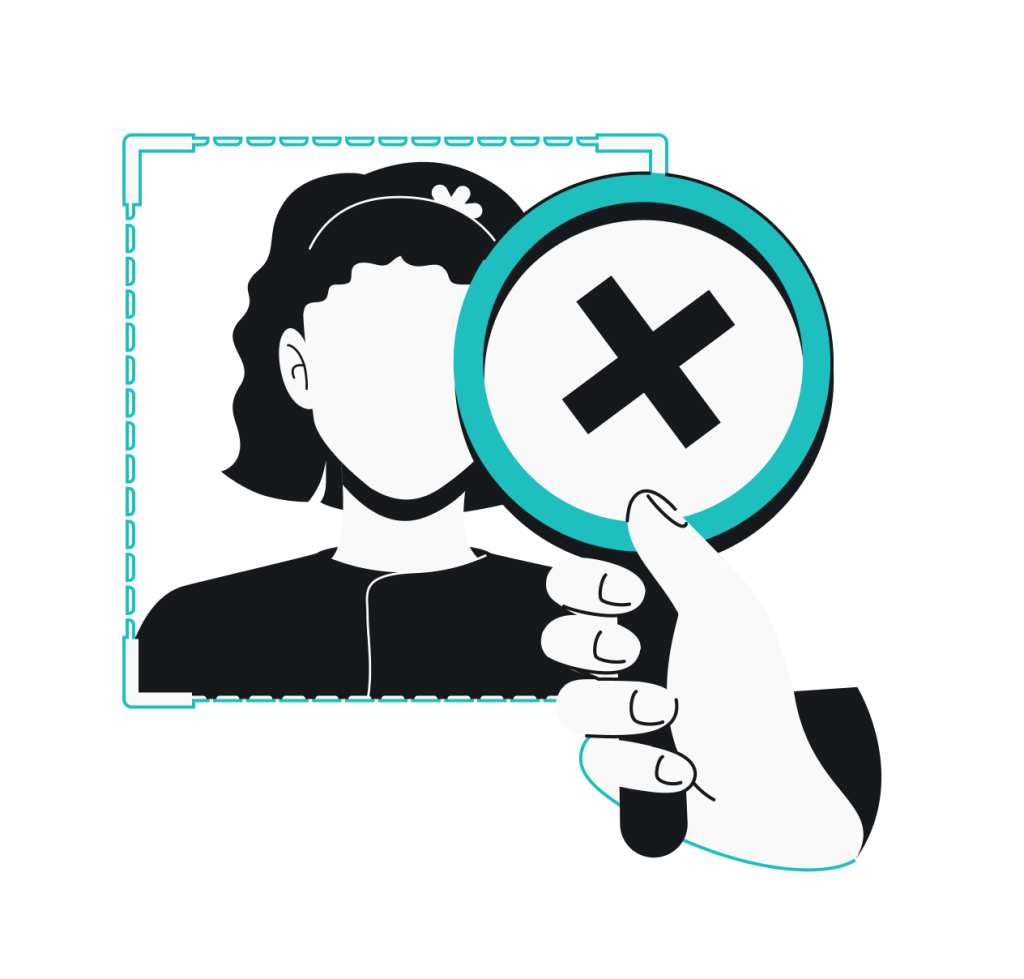If you’ve been getting unwanted calls from area code 934, you’re not alone. It’s a real New York area code, but also one often used in spam and fraudulent calls. Scammers spoof it — along with 855, 876, 888, and 470 — to appear local and trick you into answering.
Blocking won’t help, since the numbers rotate constantly. A better fix is prevention, and services like Incogni — which scrubs your data from 420+ databases automatically — can help reduce spam at its root. Read on to find out everything you need to know about area code 934.
What is area code 934 — and why are you getting calls from it?
Area code 934 is part of the US phone network, assigned to New York numbers. Still, not every call you receive from it will be genuine. To understand it better, let’s first look at the specific region it serves.
Area code: the first three digits of a US phone number. It’s used to identify the specific region, city, or service area where the number is registered.
Where is 934 located?
The area code 934 is for Suffolk County on Long Island, New York. It was added as an overlay to the existing area code 631 to meet growing demand for phone numbers in this region. Today, both codes cover the same cities and towns, including Brentwood, West Babylon, and Islip.
Why are you getting calls from 934?
As 934 is a valid New York area code, some calls you receive may be genuine — from residents, services, or businesses in the region.
More often, though, they’re not. Many 934 calls come from scammers using caller ID spoofing, where they fake the number shown on your phone to appear local. The call looks like it’s from New York when it’s really coming from somewhere else, even overseas — a trick to make it seem familiar so you’re more likely to pick up.
These scam calls usually aren’t completely random either. Scammers often target numbers they’ve collected from data broker lists or leaked databases. So, if you’re seeing repeated, unexpected calls from 934 numbers, it’s a good sign your number — and possibly other personal details — has been shared or exposed online.
Is 934 a scam code?
The 934 area code is a genuine one assigned to New York, not a scam code. However, it has become associated with suspicious calls because many scam reports involve spoofed 934 numbers.
Common scams tied to these calls include fake Amazon orders or support, bogus credit card offers, tech support schemes, and sham Medicare or health insurance deals. According to the FTC (Federal Trade Commission), people have also reported calls from 934 numbers pushing debt-reduction scams, often involving credit cards, mortgages, or student loans.
Other spam area codes to watch out for
Spammers often spoof 934, but it’s far from the only area code they exploit. Let’s take a look at a few other US (and nearby) area codes that are frequently linked to spam and unwanted calls.
Top spam-prone area codes in the US
Different area codes tend to be associated with different types of spam. Here are a few codes you’re most likely to come across, along with the scams and schemes tied to them:
Area code 855
Scammers often use this toll-free code for calls that try to sound official, like ones pretending to be from the government or big companies. You have the classic debt relief pitches, urgent bank or credit card fraud alerts, and Medicare or health insurance offers. Then, just to round things out, there are also robocalls, fake Microsoft or Apple tech support, and extended car warranties.
Area code 876
Area code spam calls don’t stop at US borders — some international codes are just as heavily spoofed. For instance, area code 876 belongs to Jamaica and is often associated with lottery and sweepstakes scams. The hook is almost always the same: you’ve won big, but can only claim your winnings if you pay the fees or taxes first.
Area code 888
There’s also 888, another legitimate toll-free code, but one that’s often hijacked for fake tech support scams. Bad actors may pose as support agents or technicians from Microsoft, Apple, or other trusted names. They might claim your computer is infected or your account is hacked, then pressure you to pay for fake repairs or grant remote access.
Area code 470
Calls from area code 470 are frequently linked to robocalls and sketchy business opportunities. Scammers may dangle too-good-to-be-true job offers, investment schemes, or fake services that ultimately prove to be scams. Some reports also mention 470 numbers being used for debt reduction and medical-related scams.
Area code 347
Just like 934, 347 is a real New York area code that scammers exploit to make their calls seem local and more trustworthy. They regularly spoof it for spam tied to fake Amazon orders, phony tech support, Medicare or health insurance scams, and credit card or loan schemes.
Area codes 929, 216, 833, and 800
These are all legitimate codes, but they’ve been heavily used in spam campaigns. Scams range from robocalls and debt relief pitches to warranty scams and fake customer support lines. Some reports also mention calls tied to medical-related scams.
Why scammers spoof area codes
Area code spoofing is far from a random game. Instead, scammers deliberately use numbers that make people drop their guard and pick up their phone:
- Capitalize on familiarity: if a call shows your area code or a nearby one, you might assume it’s a neighbor, local delivery service, or even your doctor’s office;
- Bypass suspicion: unlike strange or far-off numbers, familiar or nearby area codes help scammers slip past any initial skepticism and get you to answer;
- Mimic legitimacy: certain area codes carry weight — toll-free numbers like 800 or 888 appear official, while a Washington, DC area code can make a call seem government-related;
- Pass off as trusted companies: by using the same toll-free codes — like 800, 833, 855, and 888 — as real companies, scammers make their calls seem official, tricking you into thinking you’re talking to legitimate services;
- Exploit fresh overlays: newer overlays like 934 give scammers fresh numbers that you might not recognize right away, making it easier to fly under the radar;
- Hide identity: by spoofing their numbers, scammers avoid detection and can easily switch to a new number if one gets flagged.
How to stop calls from area code 934 (and others like it)
There are a few ways to stop unsolicited calls from 934 and other area codes. Some work better than others. Let’s take a look at your options.
Option 1: Block the number manually
One of the most straightforward ways to stop spam calls from area code 934 and others like it is to block the number manually through your phone’s settings.
On iOS:
- Open the Phone app.
- Tap Recents and review your recent calls.
- Find the number you want to block.
- Tap the info icon next to it.
- Select Block Caller > Block Contact.
On Android:
- Open the Phone app.
- Tap Recents or Call History to view your recent calls.
- Review the list and tap the number you want to block.
- Tap the three vertical dots in the top-right corner.
- Select Block number or Block/report spam > Block.
This method blocks a number instantly, but it only goes so far. Scammers don’t stick to one line — they cycle through thousands of phone numbers, switch them daily, and even use spoofed ones that look different each time. So, while blocking one 934 number means it won’t reach you again, it certainly doesn’t stop scammers from trying with a new number.
Option 2: Use a spam call blocking app
Instead of blocking spam calls one at a time, you might want to try a call-blocking app.
Services like RoboKiller, Hiya, and Truecaller screen incoming calls using databases of known scam numbers, machine learning, and user reports. If a potential spam call comes in, the app can warn you, block it automatically, or send it straight to voicemail.
These call-blocking apps are a big step up from manual blocking since they can automatically vet a wider range of unwanted calls. Still, they’re far from a perfect fix.
Here’s why:
- Data limitations: spam-blocking apps rely on databases of known spam numbers, but scammers often generate new ones faster than the apps can flag them, so hundreds of calls could slip through before detection;
- Carrier restrictions: some carriers limit what third-party apps can actually block, reducing effectiveness and preventing certain calls from being stopped altogether;
- False positives: these apps can mislabel legitimate calls as spam, forcing you to review each suspicious call or override blocks to avoid missing something important;
- Unsolved root cause: blocking calls doesn’t address why scammers can reach you in the first place, and you remain exposed as long as data brokers continue trading your data.
Option 3: Use Incogni to remove your data
Scammers often get your info from data brokers, who scrape the internet for personal information like phone numbers, addresses, and emails. To stop them at the source, you can use Incogni, a data broker removal service included with a Surfshark One+ subscription.
Incogni automates finding your personal information online and sending removal requests to more than 420 data brokers and people search sites. And unlike manual methods, it works even if you don’t know exactly which brokers have your data, covering corners of the internet you might never realize exist.
Incogni also keeps monitoring the web and sends follow-up requests as needed. This ensures your info stays off the web and any new listings are removed quickly.
By removing your personal information from the internet, Incogni helps you to significantly reduce the risk of spam and scams — including unwanted calls from 934 numbers or others like them.
How to prevent spam calls in the future
Taking a few proactive steps now can save you from dealing with spam calls down the line. Here’s how to keep your number off scammers’ lists and boost your overall online security.
Stop your data from being shared
If you don’t want spammers blowing up your phone, start by keeping your personal data private. Here are some straightforward ways you can put that into practice:
- Don’t publish your number online: keep your number and other personal info off social media profiles, forums, or public websites where data brokers can scrape them;
- Avoid sweepstakes, giveaways, or sketchy forms: these often collect far more data than necessary and then sell or share your info with advertising firms and data brokers;
- Give out your info only when it’s essential: every company, service, or app you share your contact details with is another chance for it to leak;
- Opt out of marketing lists: uncheck sign-up boxes, unsubscribe from unwanted emails, and get on do-not-call lists whenever possible to reduce data sharing;
- Review your privacy settings regularly: update account permissions to limit what data is visible or shared with third parties.
Use Surfshark privacy tools
Having the right tools in your corner can make all the difference in preventing spam and scam calls. For an all-in-one security and privacy solution, check out Surfshark One+.
This bundle covers all your online security needs — some tools and features directly help prevent spam calls, while others protect your overall privacy. Here are a few of them:
- Incogni: scans for your personal information, including your phone number, and sends removal requests to data brokers on your behalf;
- Surfshark VPN (Virtual Private Network): encrypts your internet traffic and masks your IP (Internet Protocol) address, making it harder for spammers to connect your personal info to your online activity;
- Alternative ID: gives you a full online persona you can use to sign up for online services while keeping your real identity private.
For the best results, pair Surfshark One+ with an alternative number. This paid add-on provides a virtual phone number you can use in place of your main one, protecting your primary number from data leaks and spam.
For example, you might use an alternative number if you ever need to share your number on forums or classifieds. It’s also handy if you’re selling items on marketplaces, since those listings can attract a mix of genuine buyers and unwanted calls. For things like trial subscriptions and one-time sign-ups, an alternative number also saves you from handing out your main line.
What if the call isn’t really from 934?
Just because a call pops up as a 934 number on your phone doesn’t always mean it’s actually coming from the New York region. Scammers can use caller ID spoofing to make a call appear local when it isn’t.
Caller ID spoofing explained
Caller ID spoofing is when the caller fakes the number that appears on your phone’s caller ID display. For example, you might see what looks like a local number, but the call could actually be coming from another US state or even from another country altogether.
Here’s a quick look at how it works:
Caller ID spoofing usually starts with the scammer picking a number they want to appear on your screen. Typically, they’ll go for a number with a local area code, like 934, so it feels more trustworthy.
They then use VoIP (Voice over Internet Protocol) or other similar tools to mask their real number and make the call look like it’s coming from the chosen 934 number.
When the call reaches your phone, the spoofed number shows up on your screen. To you, it looks like a normal call from that area code — even though the actual caller could be from somewhere completely different.
What to do if you’re unsure
It’s not always easy to tell a scam call from a legitimate one. For your security and peace of mind, here are a few ways to handle such calls safely:
- Let it go to voicemail: most spammers won’t bother leaving a message, but real callers usually will if it’s important;
- Look up the number: use reverse lookup tools or research online to see if others have flagged the number as spam;
- Avoid sharing personal info: if you answer, don’t give out sensitive data like your Social Security number, banking details, or any identifying information;
- Trust your gut: if the caller pressures you, threatens you, or just feels off, hang up right away;
- Double-check the caller: if someone claims to be from a company or government agency, don’t just take their word for it — hang up and call the official number yourself;
- File complaints: report scam attempts, robocalls, or persistent unwanted calls to the FTC’s Do Not Call Registry or your phone carrier.
Stay sharp, stay private, stay ahead of area code spam calls
Area code 934 is legitimate, but like 855, 876, 888, and 470, scammers often abuse it by spoofing it. Blocking these numbers might buy you a break, but the catch is that it never lasts. Instead, the most effective long-term protection comes from keeping your personal data — especially your phone number — out of data brokers’ hands.
That’s where the Surfshark One+ security and privacy bundle is especially helpful. Incogni automates requests to remove your details from broker databases, including your number. Meanwhile, other tools in the suite — like VPN, Alternative ID, and more — give you greater control over your data, protecting your privacy for the long run.
FAQ
Is area code 934 spam?
No, area code 934 isn’t necessarily spam — it’s a legitimate area code in New York. That said, scammers often spoof 934 numbers to make their calls appear local. Common scams linked to this area code include bogus medical-related pitches and debt relief schemes — all designed to trick you into handing over money or sensitive security details.
Make sure you always verify the caller’s identity before giving out personal or financial information in such calls.
Where is the 934 area code from?
The 934 area code is from Suffolk County on Long Island, New York. It was introduced as an overlay to the existing 631 area code, and both area codes now cover the same region. This includes places like Brentwood, Islip, West Babylon, Huntington, Smithtown, and Brookhaven.
How can you tell a scammer’s number?
It’s not always possible to tell a scammer’s number. That said, you can look out for red flags. For instance, these numbers might show up as unknown, blocked, or oddly similar to your own. Scammers also usually call repeatedly, hang up quickly, or leave pre-recorded voicemails. If you answer, the caller may pressure you into urgent action, ask for money, or fish for sensitive info.
The rule of thumb is simple: when in doubt, don’t pick up or call back. Instead, verify the number through trusted channels first.
Is it better to block spam calls or just delete them?
Blocking spam calls is usually better than just deleting them. Blocking stops repeat calls from the same number, while deleting only clears your call log without preventing future calls. Still, since spammers often rotate spoofed numbers, blocking isn’t 100% foolproof either.
The best fix is to cut things off at the source. Use Incogni to scrub your data from people-search and marketing databases, so fewer third parties can access your phone number and other personal details in the first place.




